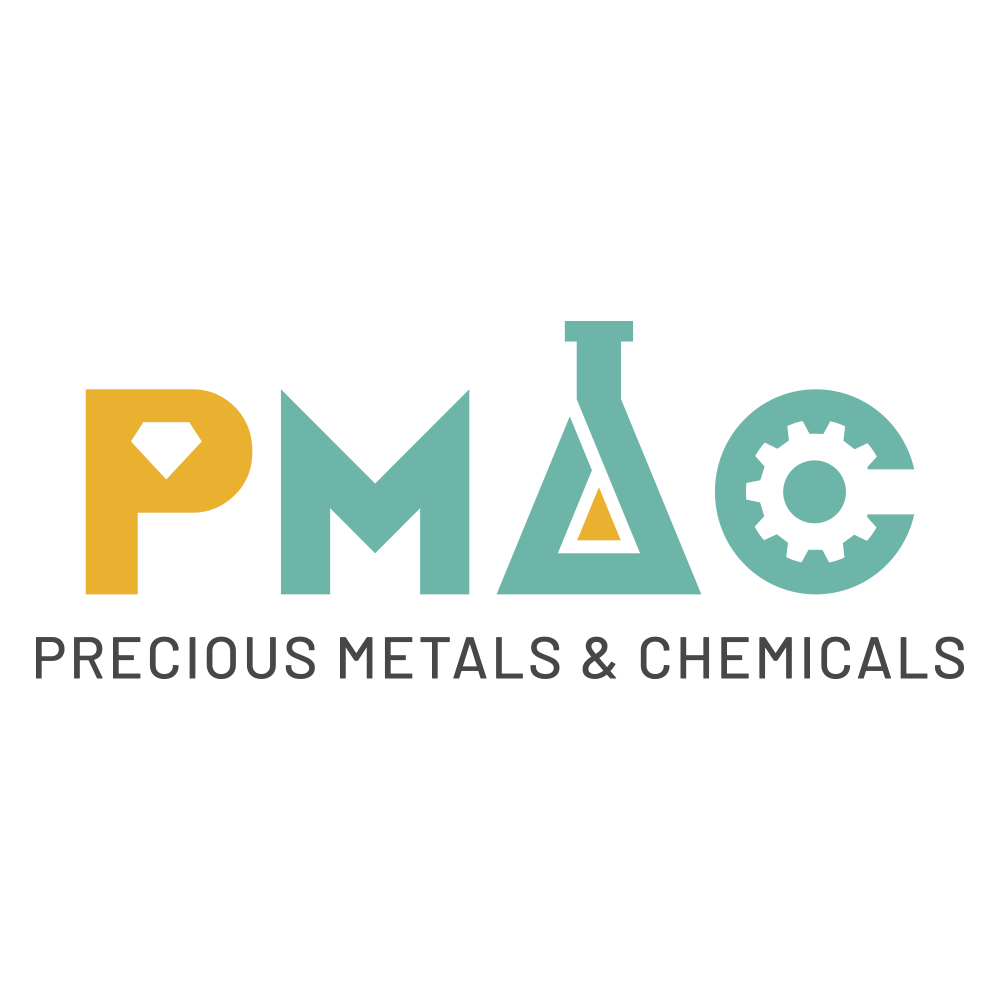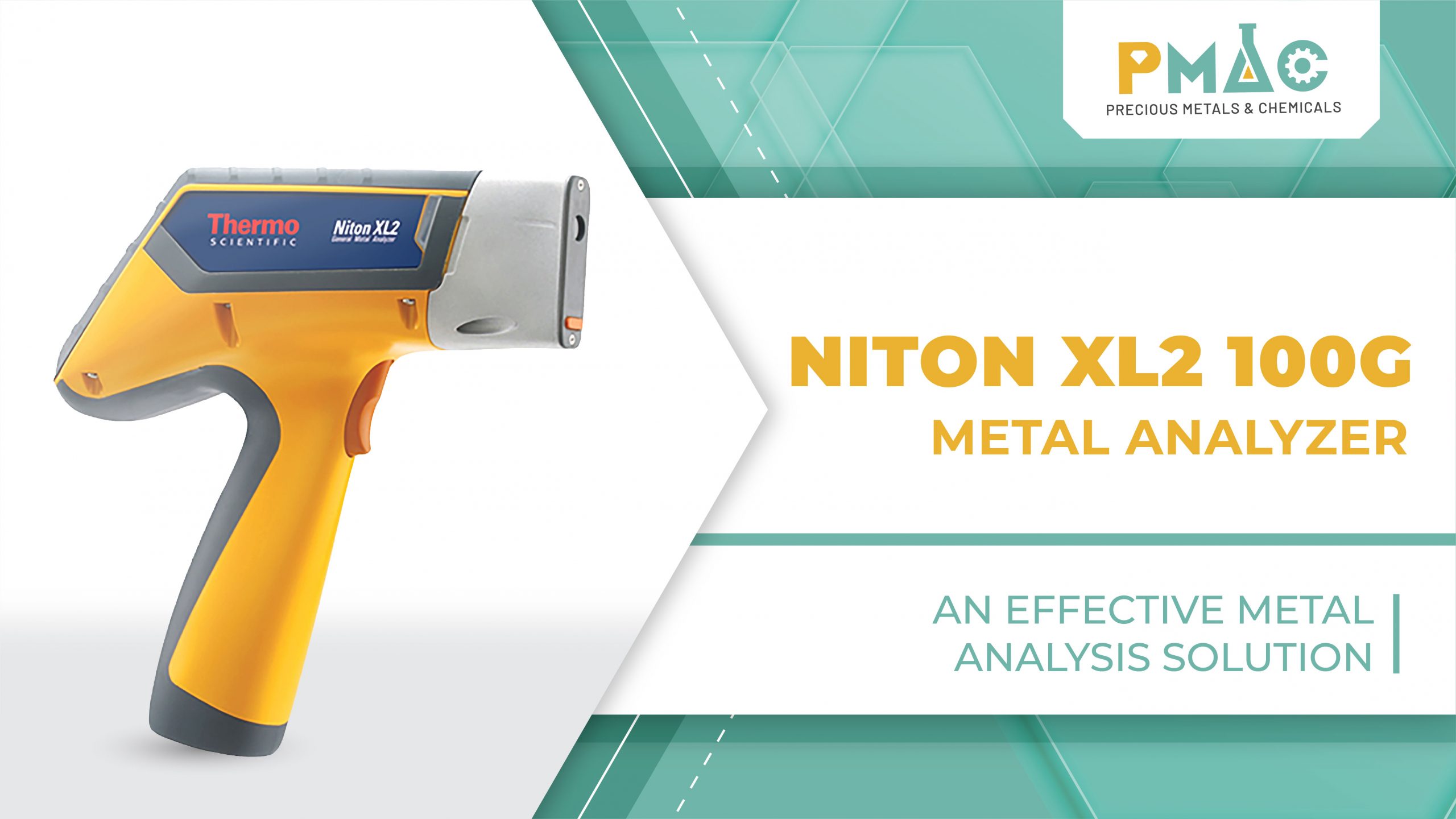In the metal manufacturing, production, recycling, and mining industries, testing the metal composition is a critical factor to ensure the quality and performance of products. The Thermo Fisher Scientific Niton XL2 100G Metal Analyzer is an optimal solution that helps businesses achieve accurate, fast, and cost-effective analysis results. In this article, PMAC will introduce this product in detail, covering its operating principle, key features, and real-world applications in the industry.
1. Introduction to the Metal Analyzer

In the process of metal production and processing, accurately determining the metal composition is essential to ensure product quality, optimize the manufacturing process, and meet environmental standards. Previously, metal composition analysis often took a long time and required complex, expensive methods. However, with technological advancements, the Niton XL2 100G Metal Analyzer was introduced, offering a quick, accurate, and efficient solution.
The Niton XL2 100G Metal Analyzer utilizes advanced X-ray Fluorescence (XRF) spectroscopy technology, enabling rapid and precise analysis of metals and alloys. There is no need to destroy the sample or perform complicated processes; users simply aim and shoot the device at the sample, and the result is displayed in seconds.
This product from Thermo Fisher Scientific not only meets the metal analysis needs in the industry but also helps businesses optimize quality control processes, saving both time and costs.
2. Key Features of the Niton XL2 100G Metal Analyzer

2.1 Operating Principle
The Niton XL2 100G Metal Analyzer operates based on the X-ray Fluorescence (XRF) spectroscopy principle. When X-rays are emitted from the device and directed at the sample material, the elements in the sample emit a unique fluorescent spectrum. Based on this spectrum, the device analyzes and identifies the elements present in the sample, as well as determining the concentration of each element.
XRF is a non-destructive technology, meaning the sample does not need to be altered or destroyed during analysis, which helps save materials and reduce testing costs.
2.2 Compact and Flexible Design
One of the significant advantages of the Niton XL2 100G is its compact and user-friendly design. Weighing only 1.53 kg, the device is easy to carry and use in various locations, from production workshops and construction sites to recycling areas.
The touch screen allows users to easily operate and instantly read the analysis results. With its user-friendly interface, all users need to do is aim and shoot—it’s so simple that even individuals without deep expertise can use the device easily.
2.3 Wide Analysis Range
The Niton XL2 100G Metal Analyzer can analyze up to 25 elements, from Titanium (Ti) to Bismuth (Bi). This makes it suitable for analyzing a wide variety of alloys, including stainless steel, copper alloys, nickel alloys, and many other materials.
Moreover, the device can analyze alloys precisely, allowing companies involved in metal manufacturing and fabrication to check the quality of input materials and final products while ensuring the quality of alloys throughout the production process.
2.4 Advanced Connectivity Features
The Niton XL2 100G is equipped with modern connectivity features such as USB and Bluetooth, allowing users to easily transfer data and connect to other devices quickly. The Niton Data Transfer (NDT) software that comes with the device helps users manage data and report analysis results while storing analysis information for future reference.
3. Applications of the Niton XL2 100G
3.1 Metal Quality Control in Manufacturing
One of the primary applications of the Niton XL2 100G Metal Analyzer is testing the quality of metal materials in manufacturing and processing industries. The device helps businesses check the composition of input materials, identify alloys during processing, and verify the quality of final products.
- Input Material Testing: The device helps identify the metal composition in imported or purchased raw materials, ensuring they meet technical and quality requirements.
- Alloy Identification During Processing: Testing the alloy composition during manufacturing ensures that products have the strength and material properties required for technical specifications.
- Final Product Quality Testing: The device ensures the final products meet high-quality standards, with no issues related to metal composition, reducing the risk of manufacturing failures.
3.2 Metal Scrap Recycling
The Niton XL2 100G is also widely used in the metal recycling industry. During recycling, sorting and accurately identifying alloys are crucial to optimizing the recycling process and increasing the value of metal scrap.
- Metal Scrap Sorting: The device helps quickly identify the types of alloys in scrap materials, allowing for precise sorting, making the recycling process more efficient.
- Scrap Valuation: With its precise composition analysis capabilities, the device helps determine the appropriate valuation of metal scrap, helping recycling businesses maximize their profits.
3.3 Compliance Testing (RoHS, WEEE)

The Niton XL2 100G is also used to test electronic products, toys, and consumer goods to ensure they comply with environmental safety regulations, such as RoHS (Restriction of Hazardous Substances in Electrical and Electronic Equipment) and WEEE (Waste Electrical and Electronic Equipment Directive).
Hazardous Substance Detection: The device helps test for hazardous substances such as lead (Pb), mercury (Hg), and cadmium (Cd) in electronic components, ensuring that products are safe for consumers and environmentally friendly.
4. Why Choose the Niton XL2 100G?
The Niton XL2 100G Metal Analyzer offers numerous benefits for users:
- User-Friendly and No Expertise Required: The device features a simple interface, making it easy for users to operate and obtain analysis results immediately without requiring in-depth training.
- Fast Results: The device delivers results in seconds, saving time and improving work efficiency.
- High Accuracy: The device provides highly accurate results, reducing errors in the analysis process.
- Operates in Harsh Environments: The device performs well in harsh environments such as production workshops, construction sites, or recycling plants.
- Cost-Effective: Using the metal analyzer helps businesses save on sample testing and analysis costs, as well as reduce time and labor.
With the information provided by PMAC, the Niton XL2 100G Metal Analyzer from Thermo Fisher Scientific is truly an ideal solution for businesses in need of metal and alloy quality testing. With high accuracy, a compact design, and modern features, the Niton XL2 100G not only enhances production efficiency but also saves costs and time. If you are looking for a powerful, user-friendly, and efficient metal analysis tool, the Niton XL2 100G is an option you can’t miss. Contact PMAC now for a free product demo.



